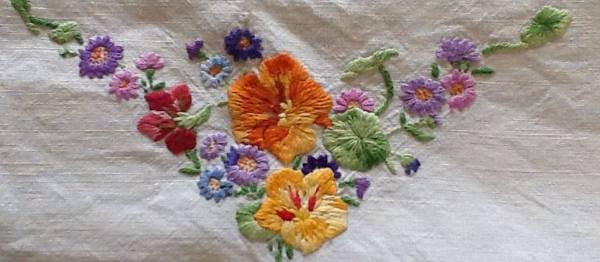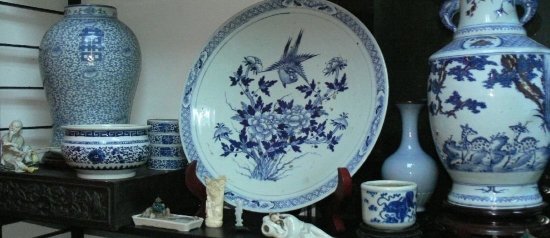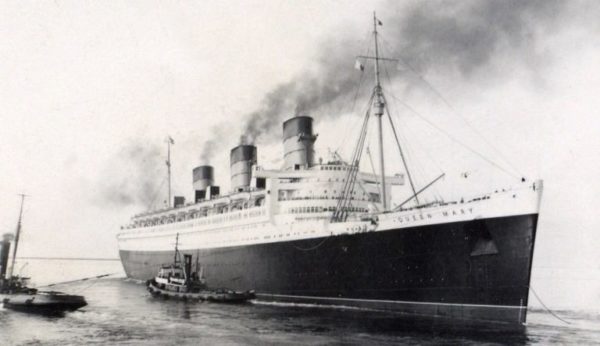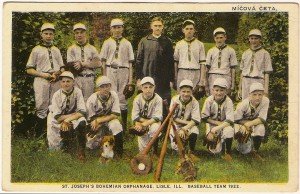Jack Vettriano is a rare bird indeed. He is so successful that instead of scraping a living selling the odd painting, his work is highly sought after and the artist can command thousands of pounds for each work. Proof of his popularity is not in short supply.
At a recent charity auction The Look of Love sold for £40,500. 21 of his paintings sold on the first day of the prestigious art fair Art London in May 2002 and in excess of 500,000 posters of his work have been sold.
He is not just famous in the art world but known and appreciated by the public at large in England and other parts of the world too, particularly in Hong Kong and Johannesburg. Vettriano is not without his detractors but perhaps his prosperity and skills provoke jealousy. The artist taught himself to paint.
Vettriano’s paintings possess extraordinary power and drama. Works such as Scarlet Ribbons, Lovely Ribbons II seem to be depictions of what might happen in Lunchtime Lovers if the situation developed. The potential danger in the former kind of work is fully realised in the latter. Sexy, curvaceous women are to be found in Queen of the Waltzer and My Beautiful Wound. These temptresses are far closer to being rough or gritty than the ones in The Singing Butler and Oh Happy Days. The artist is not afraid in paintings such as these of offending, and their power stems from Vettriano’s inner strength. He is in control because he can be, choosing subjects and depicting them in a manner that pleases him. His work brims with self-assurance and confidence. The Singing Butler is strong but deferent. The apparent sense of propriety and order in The Waltzers and The Singing Butler is lost in Scarlet Ribbons, Lovely Ribbons II and At Last My Lovely, and the latter paintings reflect an era much closer to our own. It seems anything goes; nobody is accountable or responsible. They express a seedy rather than romantic hedonism and explicitly show what was hitherto hidden behind closed doors. Perhaps the artist is aware that his admirers will willingly go wherever he leads them.
It is difficult to pin Vettriano’s more nostalgic scenes to a specific era though the forties spring to mind. Part of their magic or appeal can be attributed to the fact they are reminders of a past era, when things were better; the good old days when things were better made!
The combination of manliness and tenderness seems present in much of his work. The tough yet gentlemanly males seem extremely polite and one can sense they would allow a lady to pass through a door first whilst holding it open for her. The paintings that are set contemporaneously retain the elegance of those entrenched in days gone by.
It is interesting that Vettriano produced paintings like The Singing Butler at a time when reality was all the rage. Terms such as ‘docu-soap’ emerged and the more grim the situation the better, for it made popular television or art. People and artists plastered themselves all over the canvas or screen for effect and the result was an extension of themselves rather than an entity or form of entertainment one could use as a means of escape.
Recent films such as L.A. Confidential and The Talented Mr.Ripley reflect something altogether different from this and cinematically accomplish what Vettriano does in paint. In fashion there has been a return to the thirties and forties, to handbags, accessories and other frippery. People are holding on to a lifestyle in danger of slipping away completely. Vettriano has recognised this craving and produced art to satisfy it. George Thomas and Peter Collins of the Rebecca Hossack Gallery are also aware of this need and have responded to it. A certain attitude ripples through all these paintings. It is no surprise that huge numbers attended the recent Art Deco exhibition at The Victoria and Albert Museum.
The Singing Butler is one of the best known works by the artist. It captures the imagination because the viewer becomes the lady the gentleman is dancing with. You are in that red dress being swirled around feeling elegant, romantic and gorgeous (maybe even beautiful). One is no longer the spectator but the protagonist and empathetic with the figures of one’s own sex in the painting. The spectator is grasped firmly, placed in the picture and ultimately escapes his or her own banal setting. That is also where the power lies and the reason why Vettriano is never short of patrons. The viewer is engulfed by the beauty of the picture, swallowed whole and inspired to part with hard-earned cash.
Vettriano uses red to different effect in many of his works; to intimate danger or lust. The bold tones he uses, especially red and black are indicative of passion. The red in The Singing Butler indicates the lady in the painting is not the wife of the man she is dancing with. In The Look of Love, a lady sits provocatively on a couch in a revealing red dress while a man in a dapper suit gazes at her admiringly. The red dress suggests seduction far more obviously in The Look of Love than in The Singing Butler.
There is a certain atmospheric quality in Vettriano’s work that can be noted in that of other Scottish painters. It is as if the crisp air and amazing skies have infiltrated their minds and seeped through into their paintings. Henry Raeburn, for example, is especially notable for this. Spectators are attracted by it because it intimates a certain softness or rather gentility and elegance. Vettriano’s paintings Dance Me to the End of Love and Amateur Philosophers have been instilled with grace. The figures are not in a rush and are very smooth and unlikely to do anything rash or gauche. That coolness is just about retained in Undercover of Night and At Last My Lovely but one suspects a temporary lapse of decorum has just occurred or will occur very shortly.
In Vettriano’s work the viewer is sometimes presented with people who are pulling themselves together having thrown caution to the wind.
Sometimes Vettriano’s figures look a little guilty, in Lunchtime Lovers for example. When men and women appear alone together in his paintings, they are rarely a legitimate couple but instead covert lovers. In the paintings that appear to have been set several decades ago, the seemingly respectable and polished finish belies the scandal beneath. The relationship between figures of the opposite sex in his paintings is not always cosy or even familiar. Sparks of passion fly in a fashion they would not in a mundane marriage.
Vettriano’s work is fundamentally beautiful and exciting. He even uses the word in several of his titles. They are extraordinarily pleasing to the eye. Colouristically harmonious, especially in the case of Dance Me to the End of Love and In Thoughts of You (which includes the device of old of light streaming through a window notable in paintings by Rembrandt, Vermeer and the work of other Dutch masters), Vettriano fulfils people’s need to be naughty in nice surroundings.






